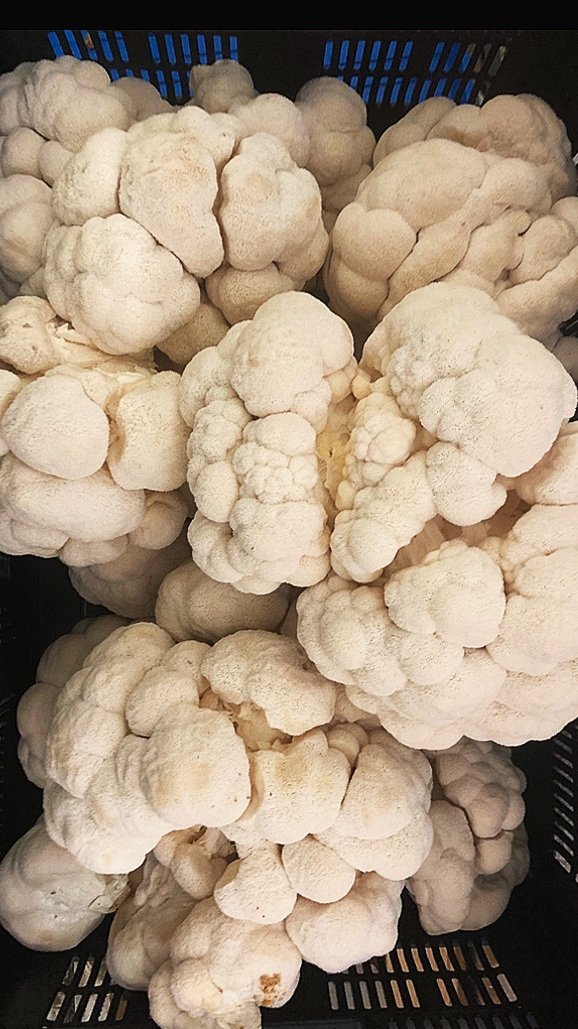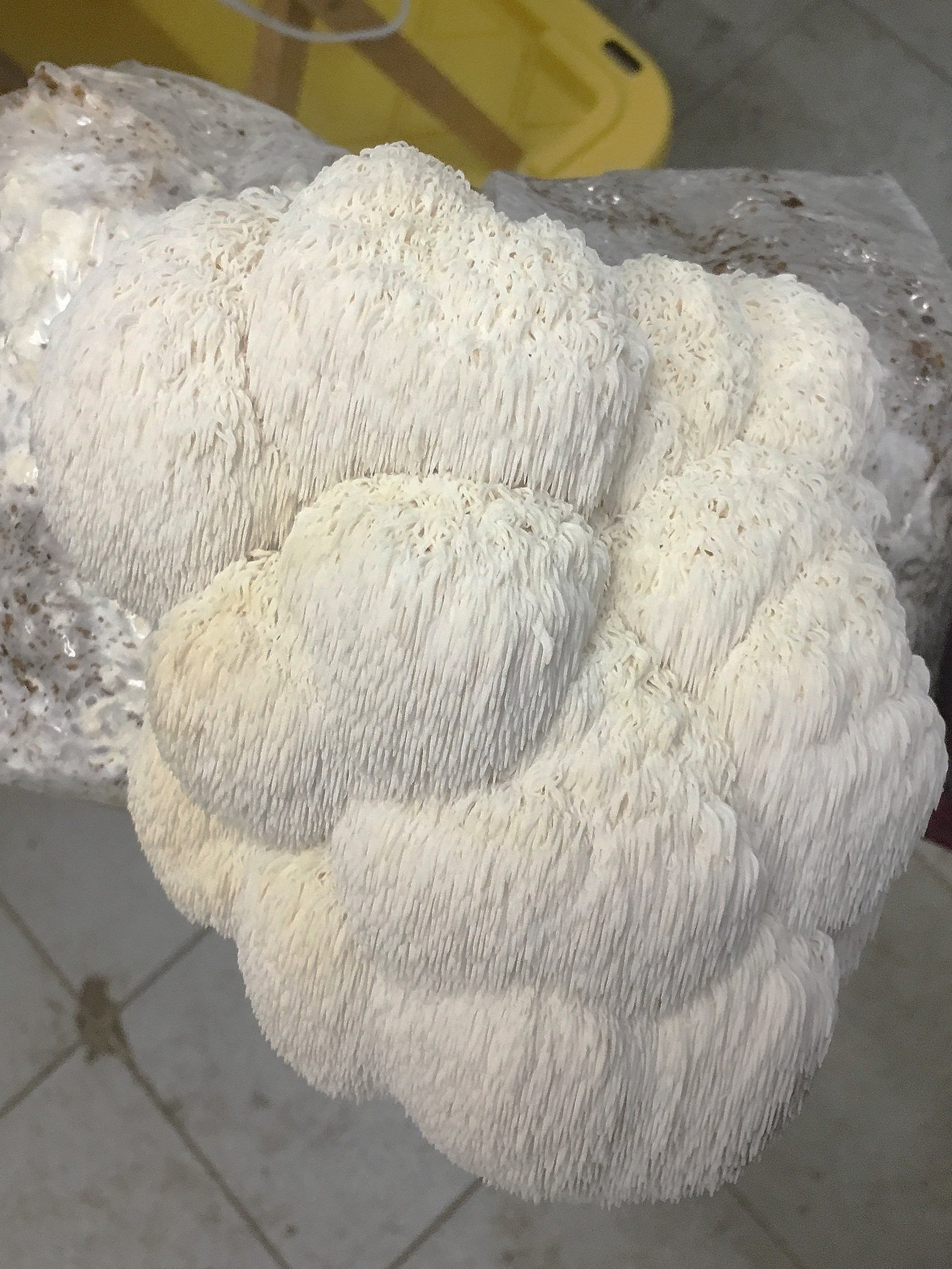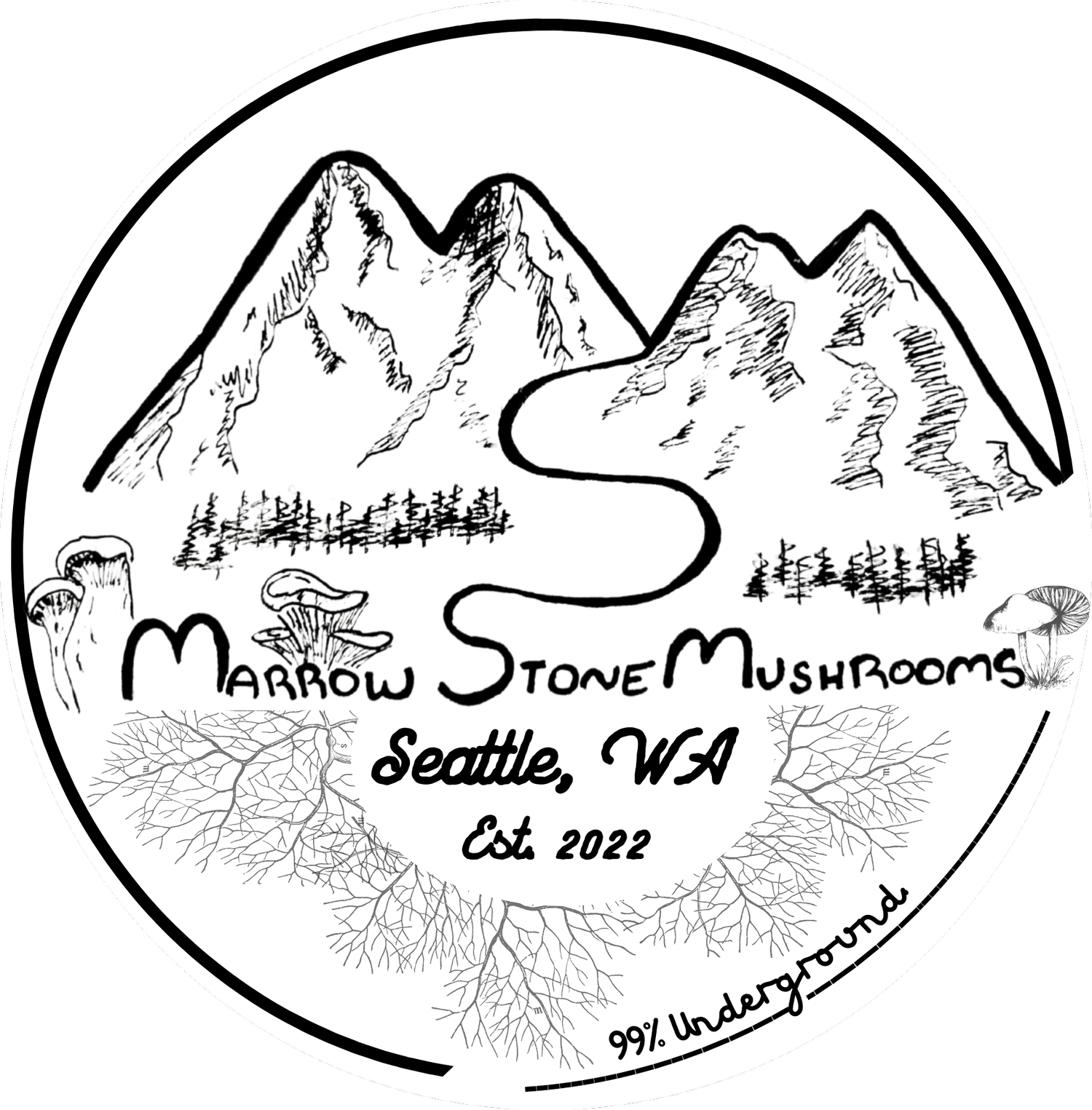 Image 1 of 3
Image 1 of 3

 Image 2 of 3
Image 2 of 3

 Image 3 of 3
Image 3 of 3




Lions Mane
Buy Lion's Mane Mushroom
Hericium erinaceus, commonly known as Lion's Mane, is a fuzzy-looking mushroom that grows in large, bulbous clusters. This variety is native to North America, Europe, and Asia. Lion’s Mane has a slew of nicknames, including the pom pom mushroom, the monkey’s head mushroom, and the bearded hedgehog mushroom.
Its shaggy appearance and bright white- or cream-colored flesh make Lion’s Mane a visual standout. Many home cooks are initially drawn to this mushroom because of its appearance, but they become dedicated Lion’s Mane fans after tasting its savory and slightly sweet flavor. This mushroom species has a very unique, meaty texture, and it can be served in a variety of dishes.
Health Benefits
Anecdotally, Lion’s Mane mushrooms have been said to have a slew of health benefits:
Relieving symptoms of depression and/or anxiety
Aiding in recovery from nervous system injuries
Reducing the risk of heart disease
Protecting against digestive ulcers
Managing diabetes
Reducing inflammation
Many of these effects have been observed in mice, but more research must be done on the effects of Lion’s Mane on human subjects to support these claims.
Lion’s Mane contains neurotrophic factors called hericenones and erinacines which can induce nerve growth factors essential for optimal brain function. This could mean that patients with cognitive impairments such as Alzheimer’s, dementia, MS, etc. can use Lion’s Mane mushrooms to regrow some of the nerve fibers in the brain and therefore increase their cognitive function.
Texture + Recommended Preparation
Before it's cooked, Lion's Mane has a soft, shaggy texture and very earthy smell. We think the best way to prepare Lion's Mane is by slicing the clusters into 3/4" "steaks" and sautéing. When sautéed with a small amount of olive oil or butter, Lion's Mane transforms into a succulent texture reminiscent of crab or lobster. Once cooked, the fibers of this mushroom are very similar to the texture of meat, which makes this variety a wonderful meat substitute in many dishes. We recommend sautéing on low heat with olive oil and butter.
Buy Lion's Mane Mushroom
Hericium erinaceus, commonly known as Lion's Mane, is a fuzzy-looking mushroom that grows in large, bulbous clusters. This variety is native to North America, Europe, and Asia. Lion’s Mane has a slew of nicknames, including the pom pom mushroom, the monkey’s head mushroom, and the bearded hedgehog mushroom.
Its shaggy appearance and bright white- or cream-colored flesh make Lion’s Mane a visual standout. Many home cooks are initially drawn to this mushroom because of its appearance, but they become dedicated Lion’s Mane fans after tasting its savory and slightly sweet flavor. This mushroom species has a very unique, meaty texture, and it can be served in a variety of dishes.
Health Benefits
Anecdotally, Lion’s Mane mushrooms have been said to have a slew of health benefits:
Relieving symptoms of depression and/or anxiety
Aiding in recovery from nervous system injuries
Reducing the risk of heart disease
Protecting against digestive ulcers
Managing diabetes
Reducing inflammation
Many of these effects have been observed in mice, but more research must be done on the effects of Lion’s Mane on human subjects to support these claims.
Lion’s Mane contains neurotrophic factors called hericenones and erinacines which can induce nerve growth factors essential for optimal brain function. This could mean that patients with cognitive impairments such as Alzheimer’s, dementia, MS, etc. can use Lion’s Mane mushrooms to regrow some of the nerve fibers in the brain and therefore increase their cognitive function.
Texture + Recommended Preparation
Before it's cooked, Lion's Mane has a soft, shaggy texture and very earthy smell. We think the best way to prepare Lion's Mane is by slicing the clusters into 3/4" "steaks" and sautéing. When sautéed with a small amount of olive oil or butter, Lion's Mane transforms into a succulent texture reminiscent of crab or lobster. Once cooked, the fibers of this mushroom are very similar to the texture of meat, which makes this variety a wonderful meat substitute in many dishes. We recommend sautéing on low heat with olive oil and butter.
Buy Lion's Mane Mushroom
Hericium erinaceus, commonly known as Lion's Mane, is a fuzzy-looking mushroom that grows in large, bulbous clusters. This variety is native to North America, Europe, and Asia. Lion’s Mane has a slew of nicknames, including the pom pom mushroom, the monkey’s head mushroom, and the bearded hedgehog mushroom.
Its shaggy appearance and bright white- or cream-colored flesh make Lion’s Mane a visual standout. Many home cooks are initially drawn to this mushroom because of its appearance, but they become dedicated Lion’s Mane fans after tasting its savory and slightly sweet flavor. This mushroom species has a very unique, meaty texture, and it can be served in a variety of dishes.
Health Benefits
Anecdotally, Lion’s Mane mushrooms have been said to have a slew of health benefits:
Relieving symptoms of depression and/or anxiety
Aiding in recovery from nervous system injuries
Reducing the risk of heart disease
Protecting against digestive ulcers
Managing diabetes
Reducing inflammation
Many of these effects have been observed in mice, but more research must be done on the effects of Lion’s Mane on human subjects to support these claims.
Lion’s Mane contains neurotrophic factors called hericenones and erinacines which can induce nerve growth factors essential for optimal brain function. This could mean that patients with cognitive impairments such as Alzheimer’s, dementia, MS, etc. can use Lion’s Mane mushrooms to regrow some of the nerve fibers in the brain and therefore increase their cognitive function.
Texture + Recommended Preparation
Before it's cooked, Lion's Mane has a soft, shaggy texture and very earthy smell. We think the best way to prepare Lion's Mane is by slicing the clusters into 3/4" "steaks" and sautéing. When sautéed with a small amount of olive oil or butter, Lion's Mane transforms into a succulent texture reminiscent of crab or lobster. Once cooked, the fibers of this mushroom are very similar to the texture of meat, which makes this variety a wonderful meat substitute in many dishes. We recommend sautéing on low heat with olive oil and butter.
